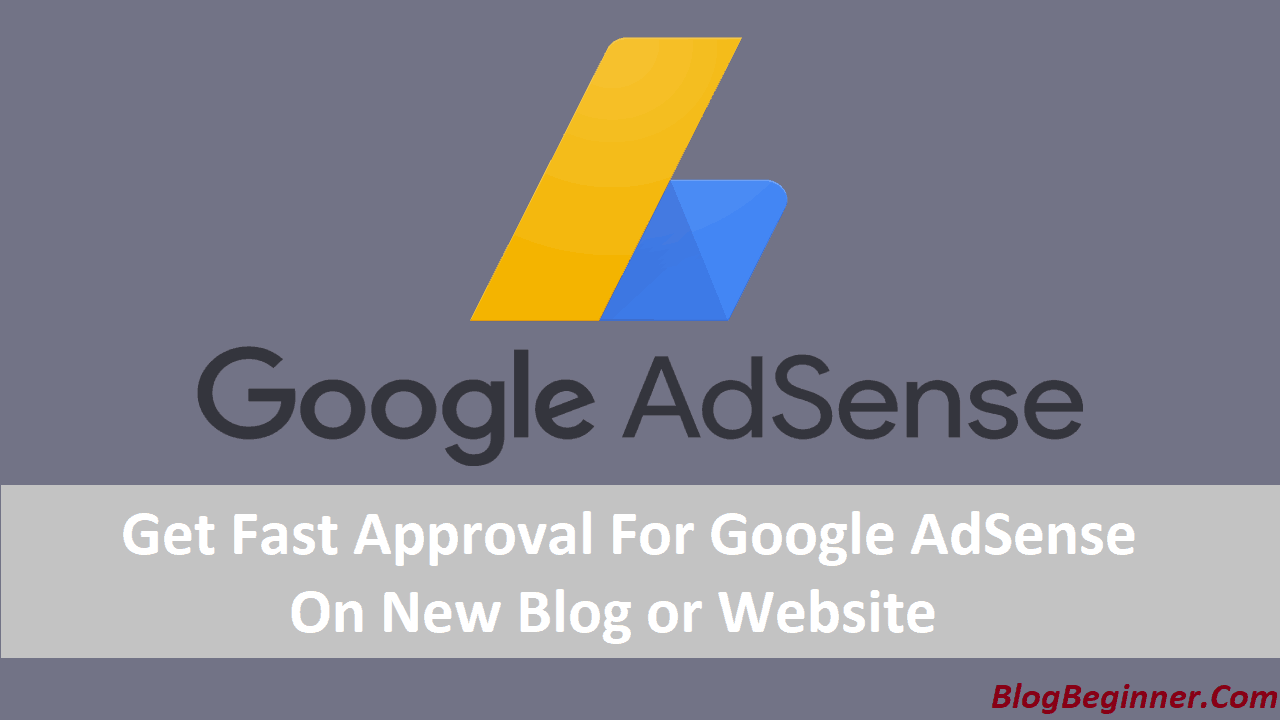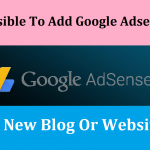Monetizing a blog seems to work best with Google AdSense, one of the top ad networks. It is 90% better in comparison to other CPC ad programs.
In fact, it provides publishers with the highest CTR for each web page. Therefore, advertisers can earn a lot on a daily basis from Google AdSense.
Rookie webmasters dream of being able to monetize their websites with Google AdSense. However, not many of them are successful.
With rigorous rules now in place, it seems difficult for one to get their blog approved. However, bloggers should not fall into despair over this, as it is possible to get approval.
Let us take a look at some basic rules one should follow if they want to get their new blog approved by AdSense.
Contents In Page
Blog Preparation
Blogs that meet the requirements always get approval from AdSense moderators. To prepare their blog, one should first check if it meets AdSense’s criteria.
We discovered there is a rule for publishers from Asian countries. They first need to own their site for at least six months.
However, this is not a rule of thumb. In fact, numerous bloggers from India have succeeded in getting approval. This is despite the fact their domains were merely one month old.
Ultimately, it all comes down to quality, so let us go over some factors for getting the blog ready for AdSense.
High-Quality Content
Regardless of one’s blog-writing skills, it is a fact that good content comes first. This means that the content is clear, unique, well organized and easy to read. Short, copy-pasted content does not make a blogger, let alone a successful one.
Obviously, 200 words are simply not enough to fully cover a certain topic. Moreover, copyrighted content does not meet AdSense’s requirements.
Hence, one should keep their content 100% original. Also, the post should be at least 600-700 words long. In fact, it is best if the blog post goes slightly over this limit.
Additionally, one should always make their blog posts unique. Lastly, the blogs should be relevant to the topic in question.
Meta Descriptions
Any unique blog post benefits greatly from meta descriptions. Basically, they inform the crawler bots about the blog content, or more precisely, what it is about.
Obviously, the AdSense editorial board isn’t all-powerful. They cannot check each and every website that has applied for AdSense approval.
This is where crawler bots come into play, as they check all the footprints on one’s blog. That is why we recommend including appropriate information in these descriptions.
The optimal length of a meta description is about 156 characters. On the other hand, some extend it to 320 (including spaces).
Having Enough Posts
Every category and page should have a sufficient number of posts. It is best if this number ranges from 15 to 30 blog posts on one’s entire blog. Even though this is not an official rule, we still recommend our readers to try it. Every tag, page, and category should contain a minimum of 3-4 posts.
According to Google AdSense, every single page must contain sufficient content. This means that one should avoid having blank pages. Once again, the posts have to be long enough, with odds of approval increasing with blog length.
Minimum Blog Domain “Age”
We already mentioned the rule for Asian bloggers.
The AdSense team issued an official statement concerning this waiting period. They took this step to protect the interests:
- of their existing publishers
- of their current advertisers.
Moreover, they want to ensure the quality of their advertising network.
However, it is clear that this is not always the case. In fact, some users were successful in getting approval with “younger” domains. Still, six months is the average domain age for specific geo-locations.
Carefully Choosing Images
Copyrighted content is an absolute no-no according to Google AdSense. This includes any type of content used without getting permission from its original creator.
Every time we choose an image, there is a chance of us using copyrighted material. Sadly, this is the exact reason why most webmasters fail to get approval. We recommend sticking to original pictures and photos or using royalty-free images. This way, bloggers will stay out of trouble.
Our personal recommendation is the site called Pexels. It contains thousands of images that one can use for commercial purposes. Fortunately, they are entirely free of charge. This is because the Creative Commons Zero license covers all images on Pexels.
Good Design and Structure
It is already a given that one’s blog should have a good structure and design. One should pay attention to their header and footer, sidebar and content area. If your visitors like it, AdSense will, too.
There are even templates one can use to make their blog look more professional. This is good news for those not well versed in design.
Blocked Blogs and Prohibited Content
AdSense checks one’s blog statistics using their search engine. So, one has to make sure Google hasn’t blocked their blog.
To check whether AdSense has blocked one’s blog or not, enter “site:yourdomain.com” in Google’s search query. If it shows in the search results, this means Google hasn’t blocked the blog.
As for prohibited content, it includes:
- copyrighted content
- anything related to alcohol and drugs
- content related to violence and weapons
- adult content
Visitors Do Not Affect Approval
While the quality of the blog itself is an important factor, the number of visitors is not. However, having enough visitors will affect the revenue generated from the blog. Remember to count your visitors after the approval!
Final Thoughts
The process of applying for AdSense may look difficult at first. However, it all comes down to a well-designed blog that contains original content. We advise bloggers against using any copyrighted or otherwise prohibited content.
We are confident that these tips will surely increase one’s chances of getting their AdSense application approved. Hopefully, these tips will be the only thing necessary for your application to be successful.


![How to Get Google Adsense Approval Fast: [Trick & Method] how to get google adsense approval fast](https://www.blogbeginner.com/wp-content/uploads/2019/03/how-to-get-google-adsense-approval-fast-150x150.png)


![Top 10 Best Ad Networks for New & Old Bloggers [Fast Approval Method] best ad networks for bloggers](https://www.blogbeginner.com/wp-content/uploads/2019/03/best-ad-networks-for-bloggers-150x150.png)


